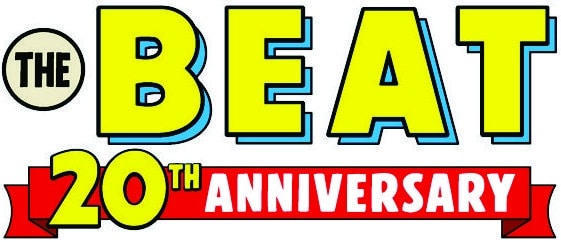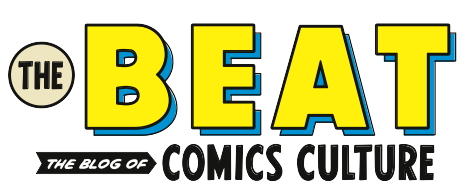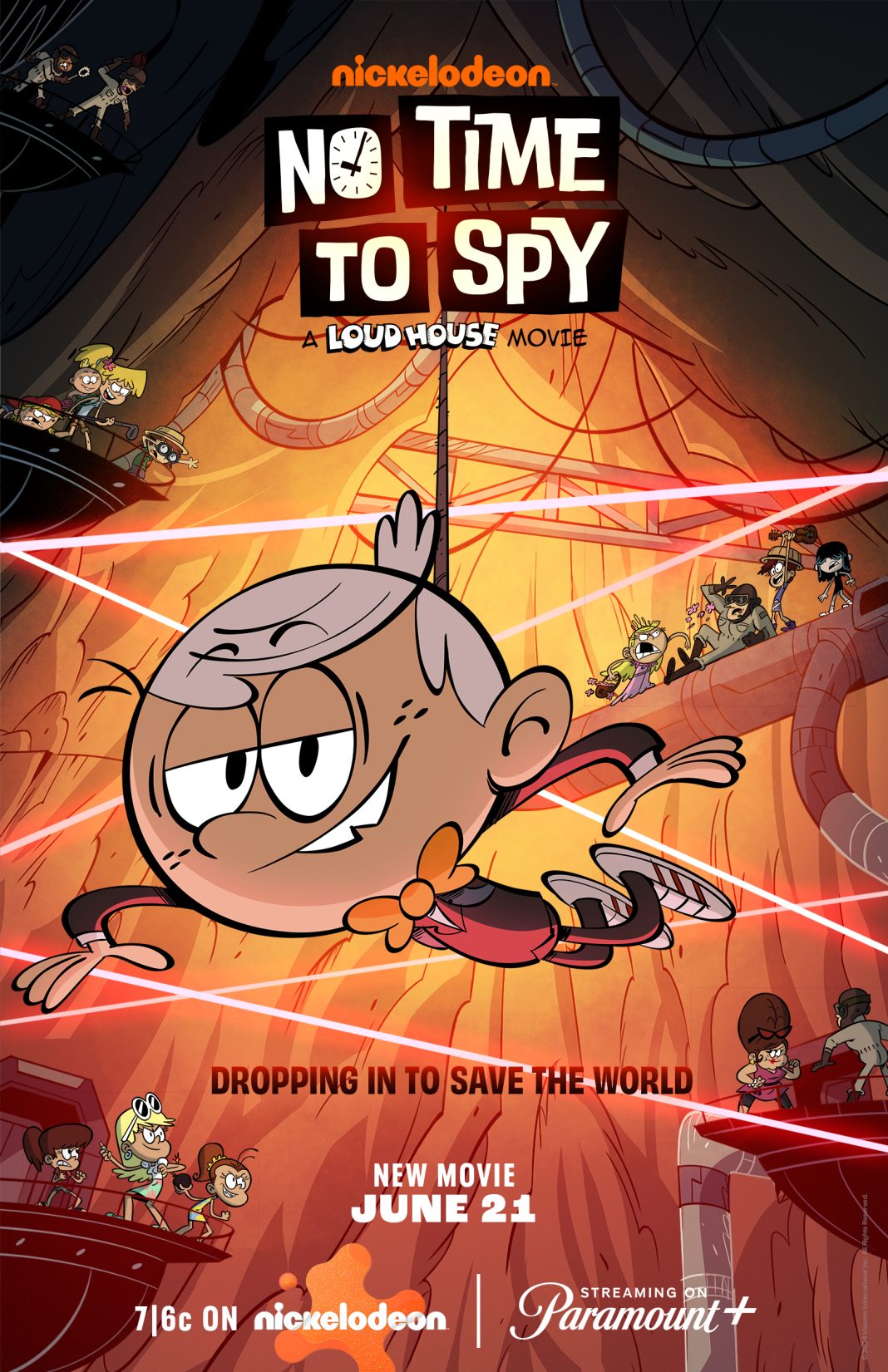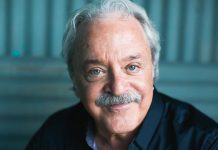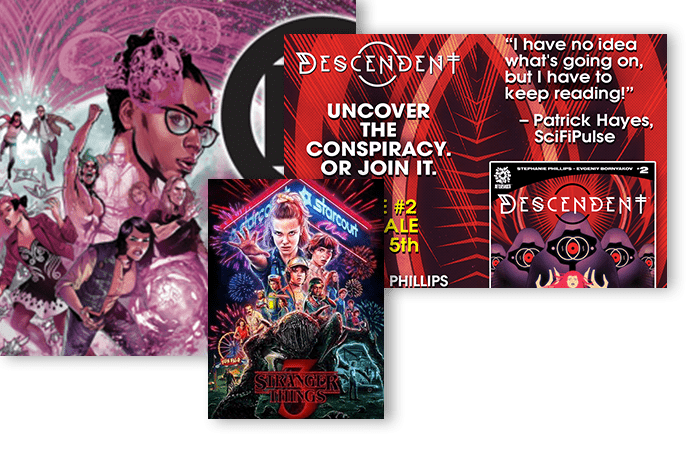In No Time to Spy: A Loud House Movie, an extension of the Emmy Award-winning animated series, Lincoln Loud and his larger than life family enjoy a tropical wedding celebration to welcome their new Gran-Gran, Myrtle, into the family. Unfortunately, an old nemesis from Myrtle’s secret agent past is out for revenge and it’s up the Loud family to rescue her. Ahead of the film’s premiere, we had the chance to chat with executive producer Michael Rubiner and director Kyle Marshall.
Taimur Dar: You introduced Myrtle way back in Season 3 as Pop Pop’s new girlfriend. Their marriage is a natural story progression. The seeds of this spy story were planted back in the episode “Pop Pop the Question” from Season 6. At that point, was the plan always to have their wedding be told in this big epic spy movie?
Miker Rubiner: I think we were kicking around the idea a little bit in the writers’ room but we didn’t have a specific plan. Then when Nickelodeon said they wanted to do another Loud House movie, that came to mind. We always talked about doing something with Pop Pop and Myrtle’s wedding. We wanted it to be a destination wedding. We set up that she has this spy background. That all came together to do a spy genre movie with the Loud House in it.
Kyler Marshall: It felt natural and a logical step. It didn’t seem like anything that was too forced.
Rubiner: With Lincoln we introduced this idea of David Steele as his new fan sensation. We were having a lot of fun with Lincoln and Clyde fantasizing about being and playing spies. So when he finds out that Myrtle has a spy past, he’s really excited about it. That fed into it too. It seemed like the series had been setting this up for a couple of seasons.
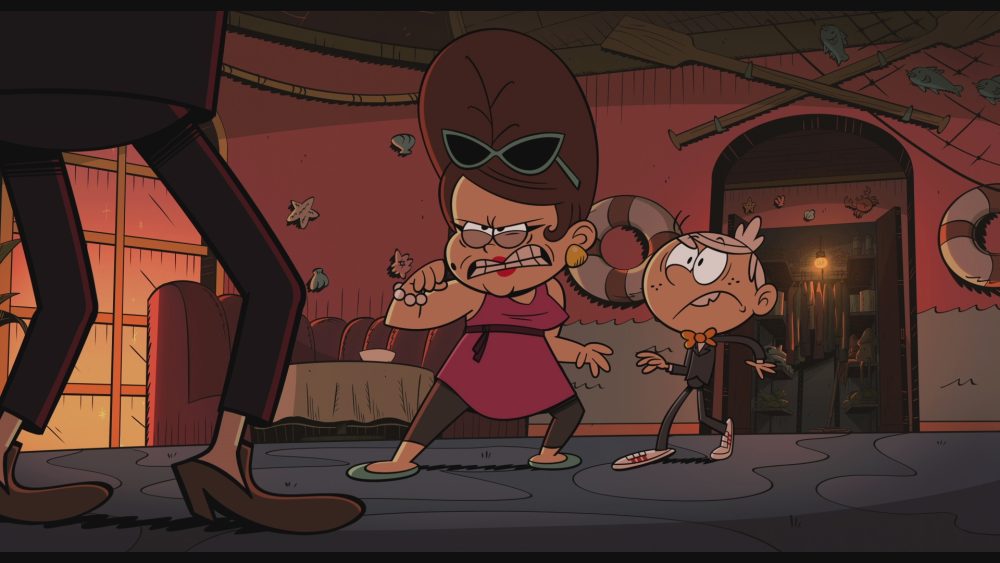
Marshall: With Alex we originally had worked with her on various projects like Casagrandes. She had been on Loud House before. She’s great talent and person to work with. Originally we had her just doing scratch for the film. While we were trying to work out the direction for the voice of that character, it was one of those things where we all fell in love with what Alex did. Alex was incredible. We didn’t want someone who was going to match exactly what Jennifer Coolidge. We wanted someone to bring their own version of Myrtle to it yet it still sounds like Myrtle. And Alex just nailed it. She brought her own life to the character.
Dar: It’s funny when you look at the first season of The Loud House, it’s very grounded in reality but as time has gone on, I think it’s fair to say you’ve gone past those initial boundaries. That pretty much happens with any long running series. If you look at The Simpsons, that first season tried to keep a real-world feel. How far do you push the wacky adventures without breaking the show?
Rubiner: Kyle and I have been there [with the show] pretty much since the beginning. The mandate of our first season was to keep everything in the house. It was that limited. Just super grounded family stories for a whole season. Then it organically started to spread out a little bit more and get to know other characters and the town and their friend groups. We’ve done so many seasons and episodes. Like The Simpsons it’s kind of natural that we start to find some fresh territory to mine that we haven’t done before. To just play around and expand the world and see where it can take us. But all the while I would say no matter how we expand the world or how crazy it gets, we do try to always have some kind of grounded character story that lies beneath it that’s still kid related. Even if it is an out there setting for the episode, there’ something that a kid can connect to with what one of the characters is going through.
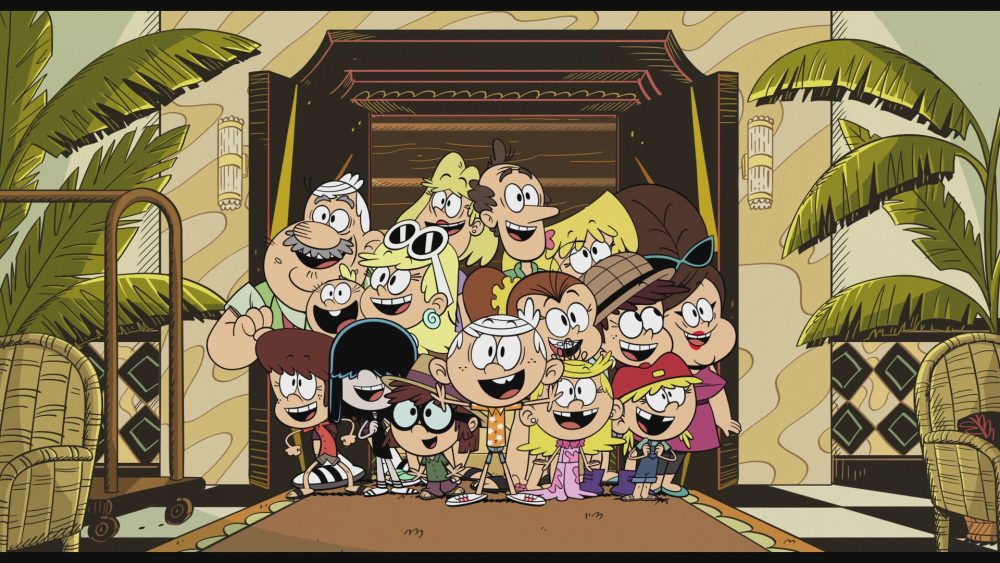
Marshall: With this one, originally, we had tried to give more care because it is such an ensemble. There are so many stories going on. You start to realize the simpler you go the better. I think in the beginning we had a bunch of different stories for a bunch of different characters. Then we realized that everyone has got to be going towards this one story. Everyone can have little side plots but they all have to link up to this one backbone of a story. I think you can get away with an ensemble that [characters] have their own interests as long as everyone is working towards the same goal.
Rubiner: For the show, we are very conscious about the mix of episodes over a season so we have a certain number of big family stories. I think that’s one of the hallmarks of the show. It’s eleven kids and kids just love to see this big family and the craziness of it. But we also try to focus on evenly distributing stories so everyone gets a moment throughout a season. Lincoln is still our main protagonist but the sisters have become so beloved characters that I think fans of the show want to see stories of the sisters so we make sure to give them time in the spotlight as well.
Dar: Are you James Bond fans and/or fans of the spy genre? If so, what are your go-to favorites? Any specific Bond movies that influenced this No Time To Spy animated film?
Marshall: We were inspired by several of the early Bond films that had a perfect blend of comedy and action. Thunderball is my personal favorite and when it came to the score, we were heavily influenced by John Barry’s work on this film. Not only does it have some of the best one-liners of any Bond film, but the underwater battle is epic.
Rubiner: Working with Kyle and our amazing writers, Whitney Wetta and Jeff Sayers, to shape the story for the movie, we all had a lot of fun talking about Bond movies. All of us are huge fans, so we kind of pooled our knowledge as we kicked around ideas. For our villain, Ham Hand, I think Jaws, who first appeared in The Spy Who Loved Me, was definitely a reference point, among others. And we looked at the structure and pacing of Bond movies – like how many fight scenes and chase scenes do you have and where do they fall in the story.
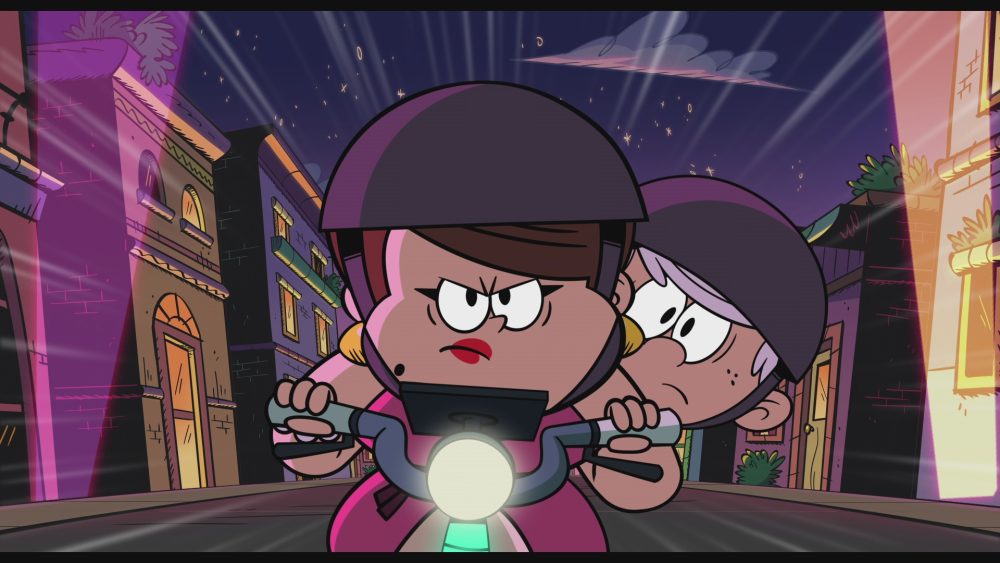
Marshall: The Loud House series is fairly grounded, more slice of life and less villain of the week, so when it came to this film, we were excited to play around with our take on that Bond trope. Early on, we had played with several ideas for the main villain and their henchmen but landed quickly in the direction that felt right, and we moved forward with it. As the story evolved during the boarding and animatic stage, we started to dive deeper into the henchmen and who they were, and it ended up adding a nice texture to the villains that we didn’t originally have. It was a really cool process to see characters we don’t usually see in the Loud House universe come to life and steal a few scenes.
Dar: It won’t surprise people to know there’s a James Bond style opening title sequence with a great song. Would love to hear the process of crafting the opening title sequence both the visuals as well as the song “No Time to Spy” written by Jonathan Hylander and performed by Julián Rebolledo.
Marshall: Jonathan Hylander has been a huge part of making The Loud House series sound and feel the way it does. When the opportunity came to go more cinematic, we looked at the different eras of Bond and were drawn to John Barry’s Thunderball. It was epic and fun, with highs and lows that took you on a ride. We also wanted to have a distinct sound like those older Bond films. Once we had the title of the film, Jonathan went to work and nailed the feel of what a Loud House Bond film should sound like and wrote the incredible opening title song. I’ll be honest, everything just clicked. It was a genre Jonathan and I loved, and the process was a blast. Once we had that song, our head of story, Ari Castleton, and I talked over what we were thinking with our talented board artist, Toby Parry, who then took it and ran. David Vasquez edited the first cut, and Tony Molina, our lead picture editor, finished it off. The brilliant team at Jam Filled then brought it to life, really pushing the look and movement of the characters in a more cinematic direction that still fits in the Loud House universe. It’s a fine line to walk with these characters. They were made to interact with a flatter environment, and with animating every season of The Loud House, they knew how to elevate the characters in just the right way to still make it feel like The Loud House.
Dar: Is there anything next in the series, The Loud House, that you can tease for fans?
Rubiner: This summer we have a lot of great episodes coming up, including Lynn playing a stunt double in Lincoln’s movie, and a fishing trip with Gramps and the cousins that goes very wrong. I’m also really excited about our epic Halloween special later this year.
No Time To Spy: A Loud House Movie premieres today at 7:00 p.m. ET/PT on Nickelodeon and Paramount+.
